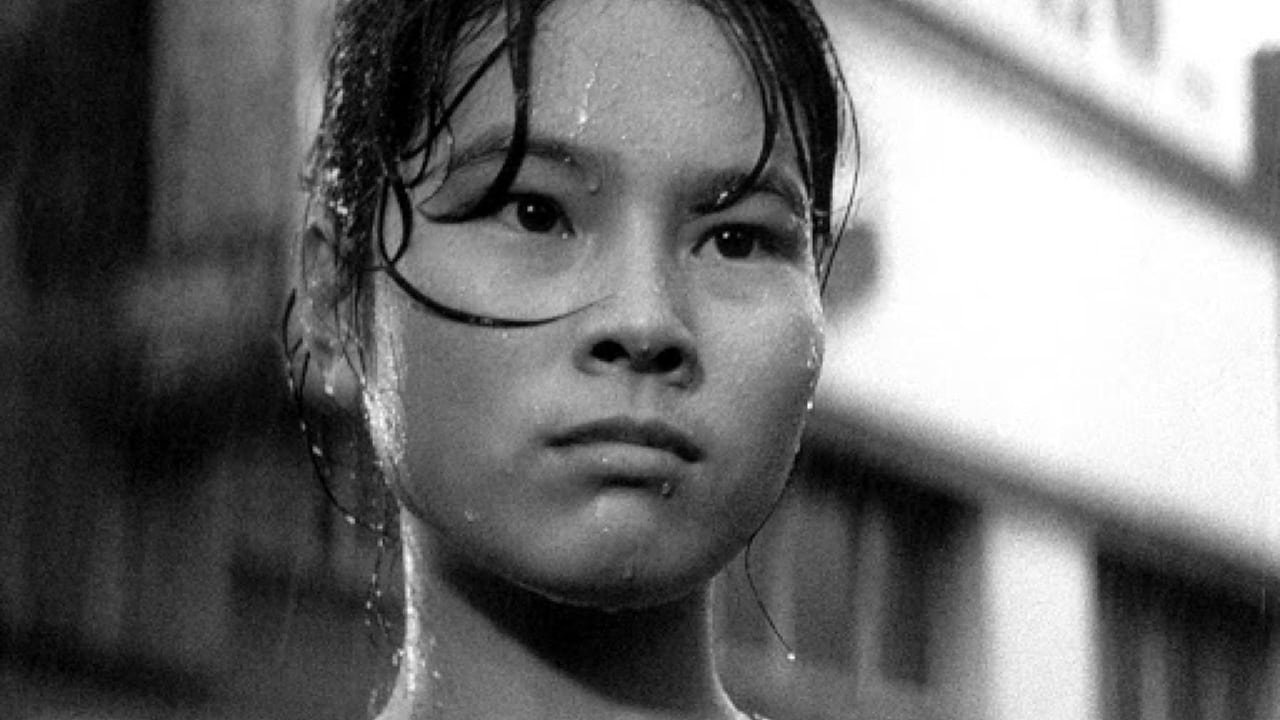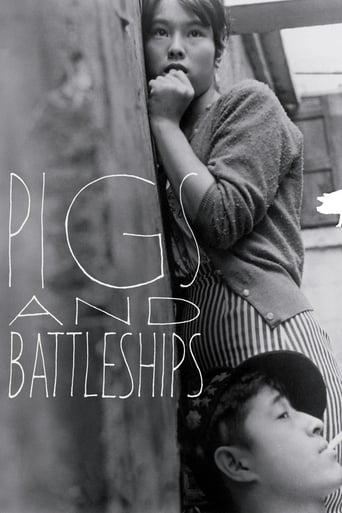Matcollis
This Movie Can Only Be Described With One Word.
Nonureva
Really Surprised!
Taraparain
Tells a fascinating and unsettling true story, and does so well, without pretending to have all the answers.
SeeQuant
Blending excellent reporting and strong storytelling, this is a disturbing film truly stranger than fiction
FilmCriticLalitRao
In any given economic scenario, it is easy to see how poor people become more poor while their rich counterparts are able to accumulate more wealth. This is depicted in 'Pigs and Battleships' through the sufferings experienced by a young Japanese boy who asks his girl friend to stop the sale of her body. Foreign occupation and rampant corruption are responsible for the decline in moral as well as social values of an occupied land. This idea has found complete favor in this film. A filmmaker cannot turn a blind eye at all to ills of the society in which he or she is living. After the making of Japanese film 'Pigs and Battleships', nobody can dare to accuse iconoclast Japanese director late Shohei Imamura of trying to denigrate Japan's image in the eyes of foreign powers. Director Imamura has always made it a point to have an honest yet frank portrayal of Japan's undesirable people in his films. By remaining honest to himself as well as his art, director Imamura has always portrayed what he has witnessed with his own eyes.
DICK STEEL
Shohei Imamura films continue to be showcased in the Japanese Film Festival, and Hogs and Warships is a tale of pimps, gangsters and prostitutes put together in a melting pot that is the streets of Yokosuka, a port town where US Navy personnel spend their R&R in postwar Japan. And I suppose you know that means painting the town red with drink and women, with the Japanese folk all eager to make a quick buck through the provision of services. I think there is no love shown here in painting, through the course of the film, how the pigs can refer to both the American soldiers - where the rowdy rank and file chasing skirts to bed, and the officers portrayed as more than willing to keep mistresses - and the Japanese men themselves who are pimping their town/city/country, where everyone's thinking of making good money in the shortest possible time. As an outcome, there's a whole load of black comedy that Imamura crafts in the film, where gangsters are constantly scheming and looking to outwit rivals, and the women well, relegated to either the backlanes waiting for pimps to bring in business, or pandering to the notion of being a kept woman for a better life overseas.Hogs and Warships, or Pigs and Battleships, begins with showing the bleak picture of the impoverished in Yokosuka out to make a living through all means possible, despite the clamp down on bars and establishments by the Shore Patrol, that seems more symbolic and hence hypocritical in nature even, where a prostitute lashes out at a SP personnel for visiting her brothel just before the closure. After a quick introduction we're introduced to the protagonists in the lovebird couple Kinta (Hiroyuki Nagato) and Haruko (Jitsuko Yoshimura, who followed up this film with Onibaba, also featured in last year's JFF), one on each side of the sexes to touch on their respective strategies to better their lives.Kinta's the quintessential easy-going, happy go lucky and unlikely gangster, where he thinks the money is with running with the gangsters, although he soon finds out his recruitment besides helping to operate the black market hog business, is to become the fall guy for practically everything that goes wrong for the gang, from the comical disposal of a corpse, to taking the rap for the gangster chief should it come down to that. With that comes the promise of riches beyond his imagination, with which he can pursue his dream of becoming a band manager.Haruko is that steely lady that we've come accustomed to with Imamura's characterization of the fairer sex. Like the other romantic leading ladies in films like A Flame at the Pier and Good for Nothing, they possess this inexplicable hope that they are able to change their man through love. Here, Haruko persuades quite unsuccessfully for Kinta to give up his life of crime, wanting him to work in a factory, which to Kinta is a dead end job. The story of Haruko serves to be more interesting than the rest, especially through Jitsuko Yoshimura's performance where in the finale you can feel her resolve jumping right out of the screen in her determination to create a new life away from the old one where mistakes have been made and old hopes shattered.It's the life and times of the working class during the era, and comes with a scene that's much talked about when all hell breaks loose on the streets of Yokosuka, where everything, including hundreds of pigs, comes together for that literal big bang finale complete with action, comedy and that tinge of poignancy even. With cinematography at its inventive best (the continuous spin from an eye in the sky angle when Haruko finds herself trapped in trouble was totally unexpected and made quite an impact on the passage of time), I found myself more interested with how the pachinko machine was manually operated at the backend by a number of hostesses working to feed those ball bearings into the player's machines!
nadamada
It's really interesting to see one of the early works of Imamura. This film includes epitomes of the overall style of the great director: depiction of the lower, outlaw parts of Japanese society; criticizing both the authority and the society for their conformism with prevailing conditions; use of animals(namely pigs for this film) as an allegory for individuals (here it should be underlined that this object of allegory beats up its master!); and characterizing women as determined individuals who have power within the society, and who are more conscious than men. In order to trace the sources of the stylized director who made brilliant films like Kuroi Ame, Narayama bushiko, and Unagi, this film is a must see.
sharptongue
Teen hoodlum Kinta is excited to be given the plum job of supervising the pig pen at the local US base, for which he'll be responsible diverting the food scraps to the black market, and scoring a good income for his yakuza gang. His girlfriend Hiroku earnestly hopes he'll leave the yakuza and get an honest job, but neither is she a paragon of virtue - she is drawn into prostitution and petty thievery. The story mostly follows their troubled relationship, against a backdrop steeped in corruption, which results from the clash of US Forces occupation against the poverty and aspirations of the people of post-war Japan.A scathing, even cynical critique. There is no tenderness at all here. Even the young lovers embracing is shown more as a desperate clinging than emotional attachment. And corruption is everywhere - there are no good guys. Confronting stuff, well-photographed, memorable as a vivid nightmare.

